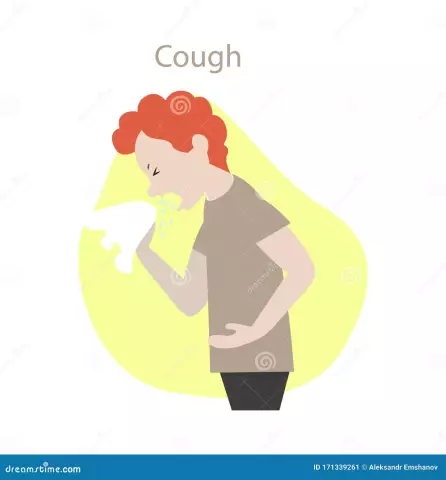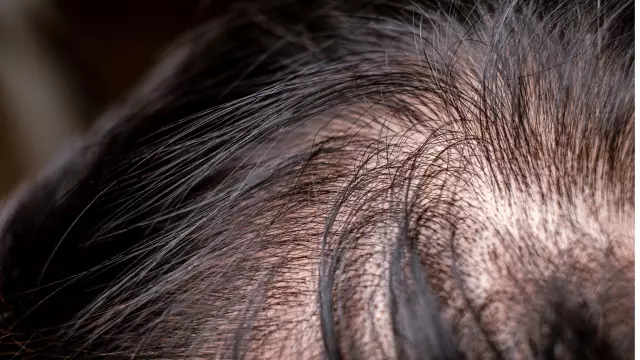- Author Rachel Wainwright [email protected].
- Public 2023-12-15 07:39.
- Last modified 2025-11-02 20:14.
Frequent female diseases and their symptoms
Most gynecological diseases manifest themselves in three main symptoms:
- disorder of menstrual function (absence of menstruation, irregular and / or painful menstruation, prolonged menstrual bleeding, dysfunctional bleeding, etc.);
- pathological vaginal discharge;
- lower abdominal pain.
Any of these signs, especially their combination, indicates the need for a visit to the gynecologist. Of course, an accurate diagnosis is made only after an examination, but on the basis of some signs, one can assume the presence of one or another pathology. Consider the most common symptoms of female diseases.

Source: depositphotos.com
Myoma of the uterus
A uterine fibroid is a benign tumor made up of muscle fibers. Its diameter ranges from several millimeters to tens of centimeters, respectively, the manifestations will be different, but the main symptom with which they turn to the gynecologist is excessively abundant and prolonged menstruation. As the tumor grows, menstrual bleeding becomes more frequent, it can occur two or more times a month. Constant and significant blood loss leads to the development of anemia (its signs are increased fatigue, loss of vitality, pallor).
Adnexitis
Adnexitis, or inflammation of the uterine appendages (ovaries and fallopian tubes), is the very disease with which mothers scare their daughters, who prefer warm fashionable clothes in cold weather. Moms, of course, are right: adnexitis is the most common inflammatory disease of the female genital area, and by no means harmless. The most characteristic symptom for adnexitis is pain in the lower abdomen, on the right or on the left, depending on which side the inflammation has developed, often radiating in the lower back or sacrum. The pain can be constant or recurring and is usually treated simply by taking an analgesic. But this is a bad idea. The drug that eliminates painful sensations does not eliminate their cause, and although the attacks of pain gradually become less intense, the problem does not go away - adnexitis simply turns into a chronic stage. About how serious it isevidenced by this fact: 70% of women with chronic adnexitis are diagnosed with infertility.
Vaginal candidiasis, or thrush
Thrush is not a fatal disease, but it can poison a woman's life, like few other "harmless" diseases. The main signs of thrush are itching in the vagina and abundant liquid discharge from it. They have a characteristic milky-whey odor and whitish color, sometimes they look like foam. Other symptoms of thrush are a burning sensation and pain in the vagina after intercourse, which may lead women to avoid intercourse. Vaginal candidiasis can persist for a long time, then dying out, then exacerbating. It is important to remember that thrush is ineffective to treat with medications alone, the cause of its occurrence is a decrease in local immunity, and therapy must necessarily include general strengthening measures.
Multifollicular ovaries, or polycystic ovaries
This diagnosis is made by almost every fourth visitor to the gynecological office in the post-Soviet space. The main and only symptom is an irregular menstrual cycle, and it can take several months between periods. Gynecologists of the Western school do not attribute this condition to diseases and do not consider it necessary to align the menstrual cycle at any cost. More and more doctors are coming to the conclusion that this is a variant of the norm. Clinical experience shows that multifollicular ovaries are not a clear sign of infertility, as previously thought. Gradually, doctors from post-Soviet countries are beginning to agree with their Western colleagues.
However, it should be borne in mind that a violation of the menstrual cycle can be a sign of other diseases, so you should not ignore it. In such a situation, it is worth at least to be examined.
Endometriosis
The uterine cavity is lined with a layer of special cells - the endometrium. The difference between endometrial cells from others is that they respond to cyclical changes in hormonal levels: the endometrium grows, thickens, abundantly grows with blood vessels - this is how the uterus prepares for conception. If conception does not occur, on certain days of the cycle, most of the endometrium is rejected and menstrual bleeding occurs. This is the norm. However, sometimes, for some unknown reason, the endometrium begins to appear not only in the uterus, but also in other points of the body. In this case, the same thing happens to him, however, the blood released during rejection does not have a natural outlet and the dead endometrial particles and blood lead first to an inflammatory process, and with a long course - to disruption of the functioning of one or another organ. This is called endometriosis.
Endometriosis is genital (within the reproductive system) and extragenital (in other parts of the body), which is why its symptoms are extremely diverse.
Genital endometriosis manifests itself as profuse menstrual bleeding, and spotting bleeding begins a few days before the actual menstruation and can continue long after. The second most common symptom is pain in the pelvic area. The pain is constant, worsening before menstruation, sometimes accompanies a trip to the toilet, intercourse, or occurs for no apparent reason.
Extragenital endometriosis is difficult to diagnose, since it has no characteristic signs, it “disguises” as other diseases, depending on the location of the pathological areas of the endometrium. This diagnosis can be indicated by pain and worsening of the condition, which are linked to cyclical hormonal changes.
YouTube video related to the article:

Maria Kulkes Medical journalist About the author
Education: First Moscow State Medical University named after I. M. Sechenov, specialty "General Medicine".
Found a mistake in the text? Select it and press Ctrl + Enter.






